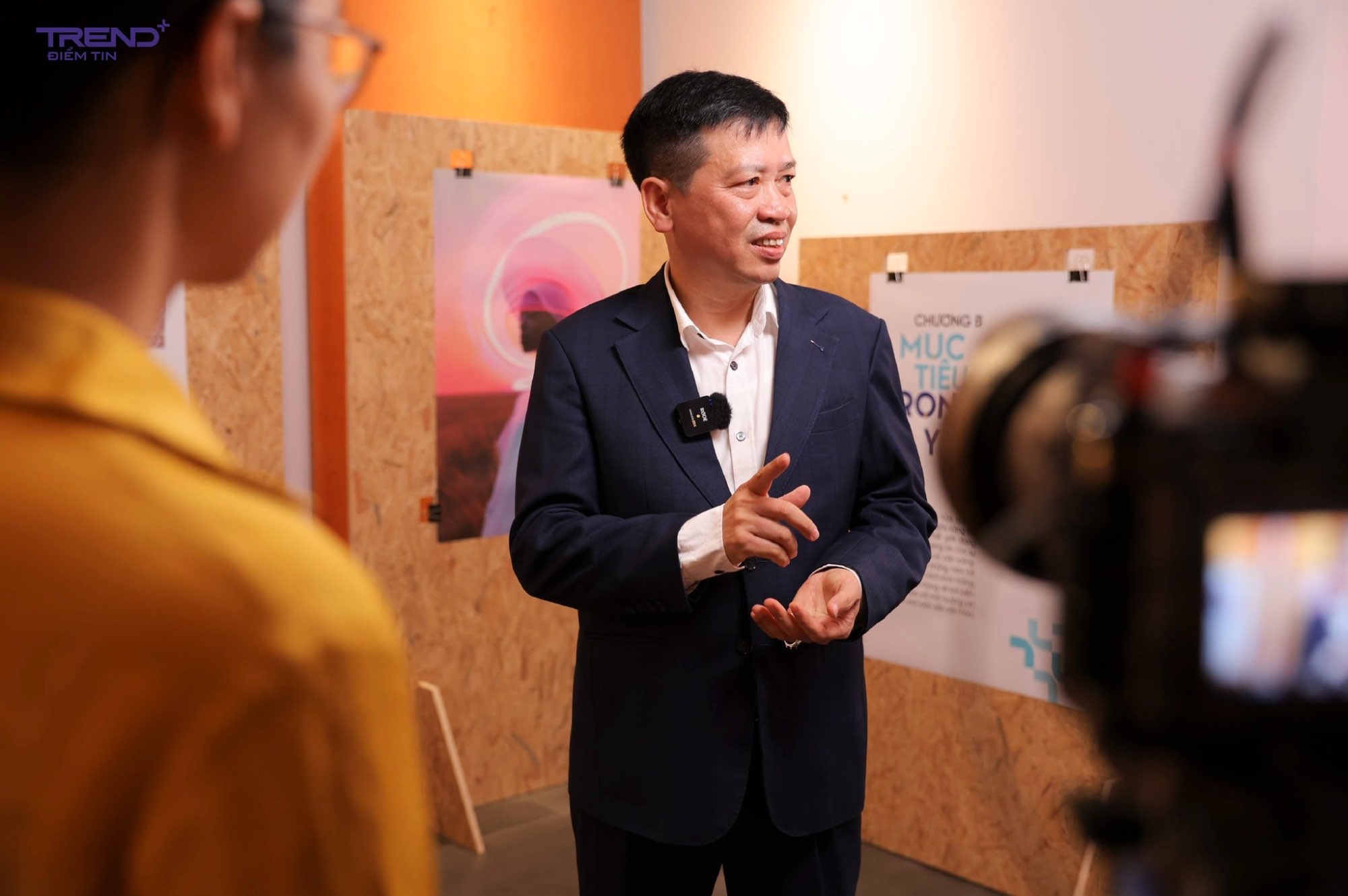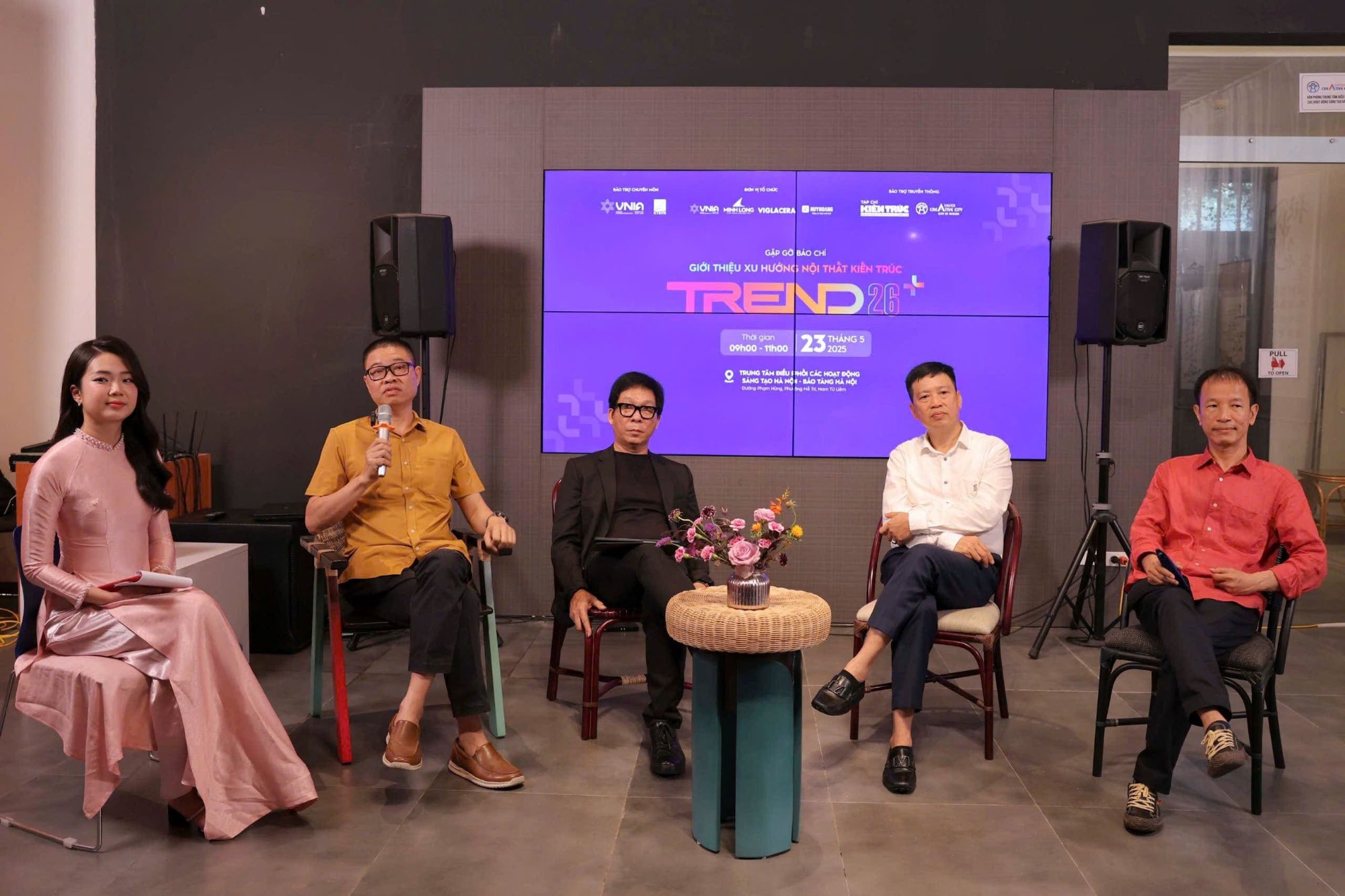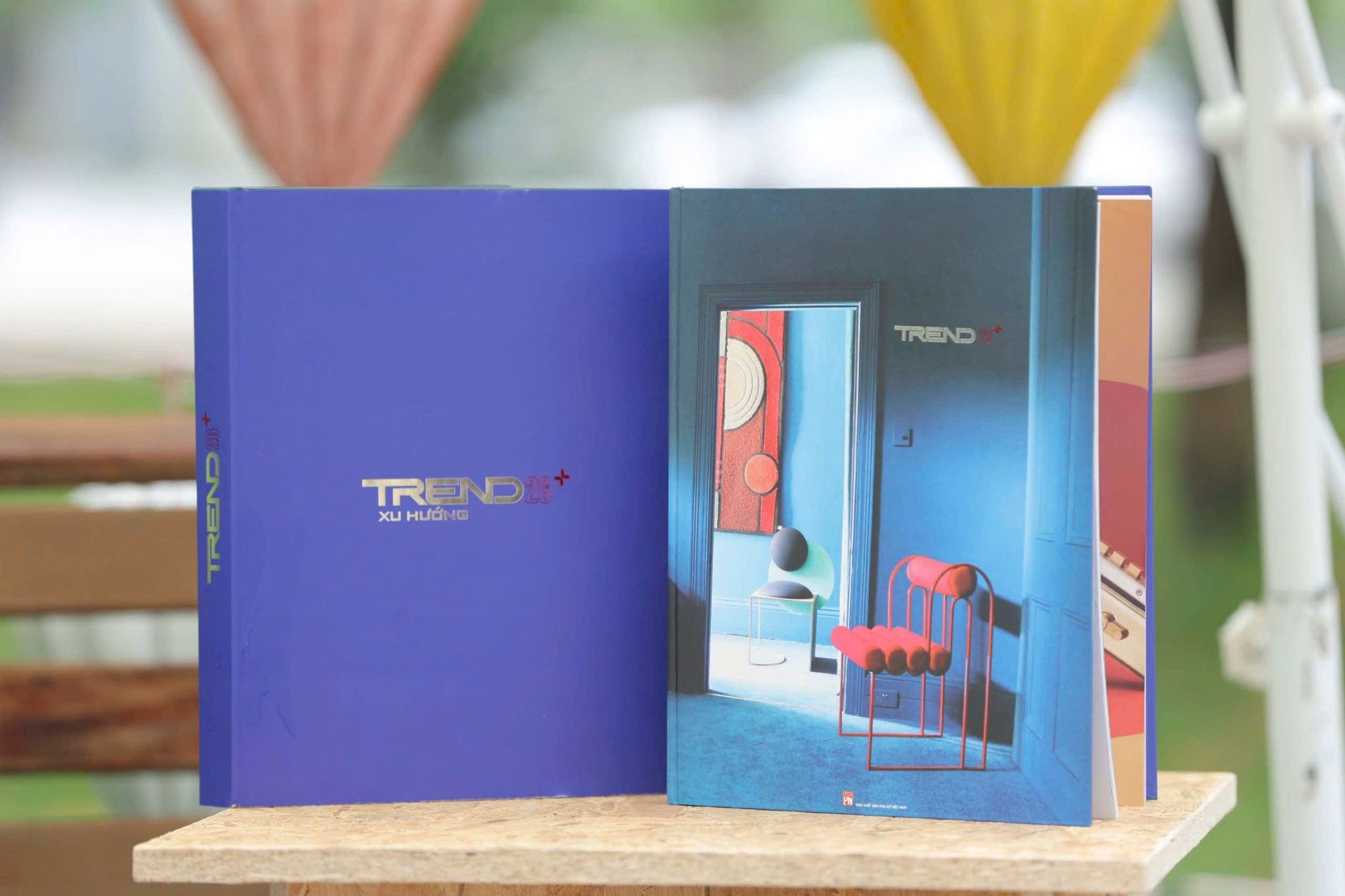News
VIETNAMESE DESIGNERS CAN SHAPE ARCHITECTURAL AND INTERIOR TRENDS
This was the key takeaway shared by experts at the launch of the Trend 26+ publication, held on June 6 in Hanoi. Trend 26+ is Vietnam’s first interior trend forecast publication, introducing 31 major architectural and interior trends for the 2026–2030 period.
Connecting to Shape the Future of Design
Trend 26+ is an analytical, curated, and forward-looking trend forecast across design, architecture, interiors, culture, and social life.
Published biennially, Trend+ is developed based on reliable data sources from international trend forecasting organizations such as WGSN and RAL, along with global industry exhibitions like Salone del Mobile (Italy), Interzum Cologne (Germany), Ligna Hannover, and Interzum Guangzhou (China).
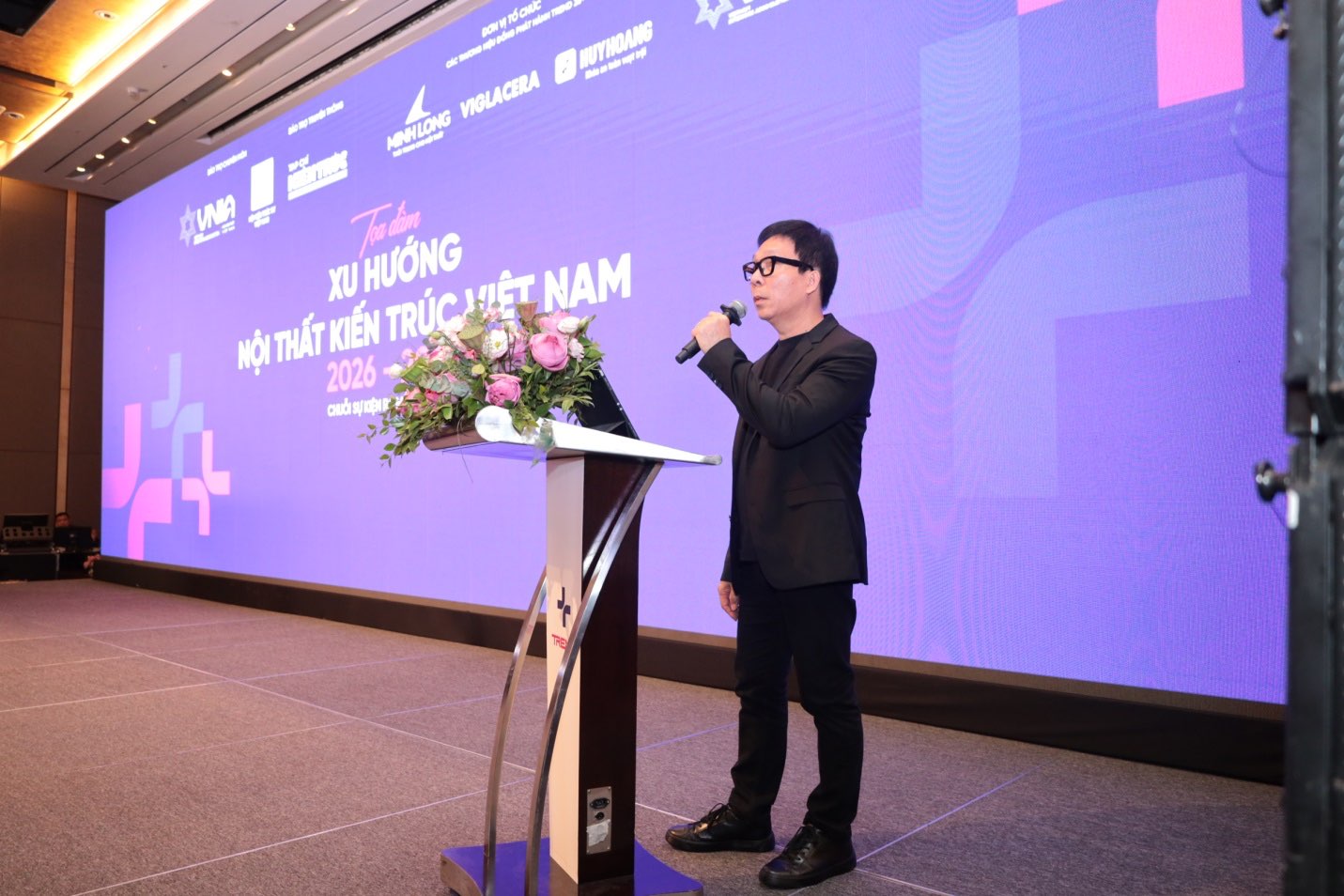
According to architect Lê Trương, Chairman of the Vietnam Interior Design Association, Trend 26+ serves as a strategic tool that enhances creativity, forecasting abilities, and critical thinking within Vietnam’s interior design community.
This year’s edition, Trend 26+, marks the first time Vietnam asserts a presence on the regional and global interior design trend map.
Trend 26+ is an initiative by three pioneering brands in materials and interior accessories—Gỗ Minh Long, Viglacera, and Huy Hoàng Locks—with technical support from the Vietnam Interior Design Association and the Vietnam Association of Architects.
Speaking at the launch event, Mr. Mai Xuân Đức, General Director of Viglacera Tile Trading JSC, said the three founding brands shared a common vision: to build and contribute lasting value to Vietnam’s architecture and interior industries.
“We realized the urgent need for a strategic tool for designers, architects, and businesses. It’s time for us not just to follow global trends but to actively shape our own—and that’s how Trend 26+ was born,” shared Mr. Đức.
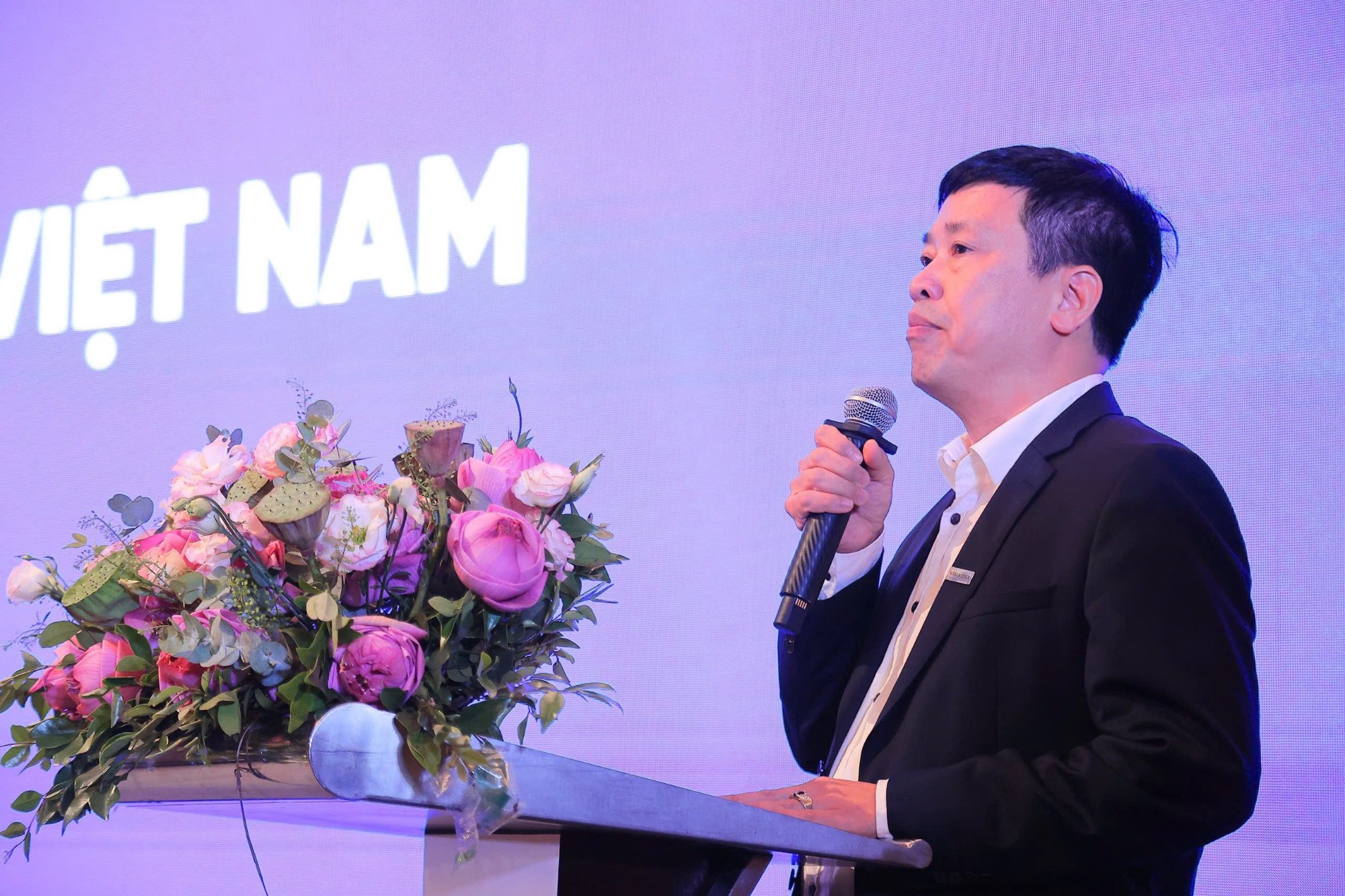
Speaking at the launch event, Mr. Mai Xuân Đức, General Director of Viglacera Tile Trading JSC, said the three founding brands shared a common vision: to build and contribute lasting value to Vietnam’s architecture and interior industries.
He emphasized that Trend 26+ is more than a publication—it is the starting point of a long-term journey to build and shape the first trend forecasting system for Vietnam’s interior design industry. A tool that is professional, systematic, and continuously updated.
“The publication’s core mission is to identify domestic trends, integrate with global currents, and promote a distinctive Vietnamese design language. It reflects the belief that Vietnamese creatives can define trends and assert cultural identity on the global stage.”
The launch of Trend 26+ also reflects the spirit of connection between businesses, designers, architects, researchers, and investors—working together to create a solid foundation between expertise and practice, creativity and application.
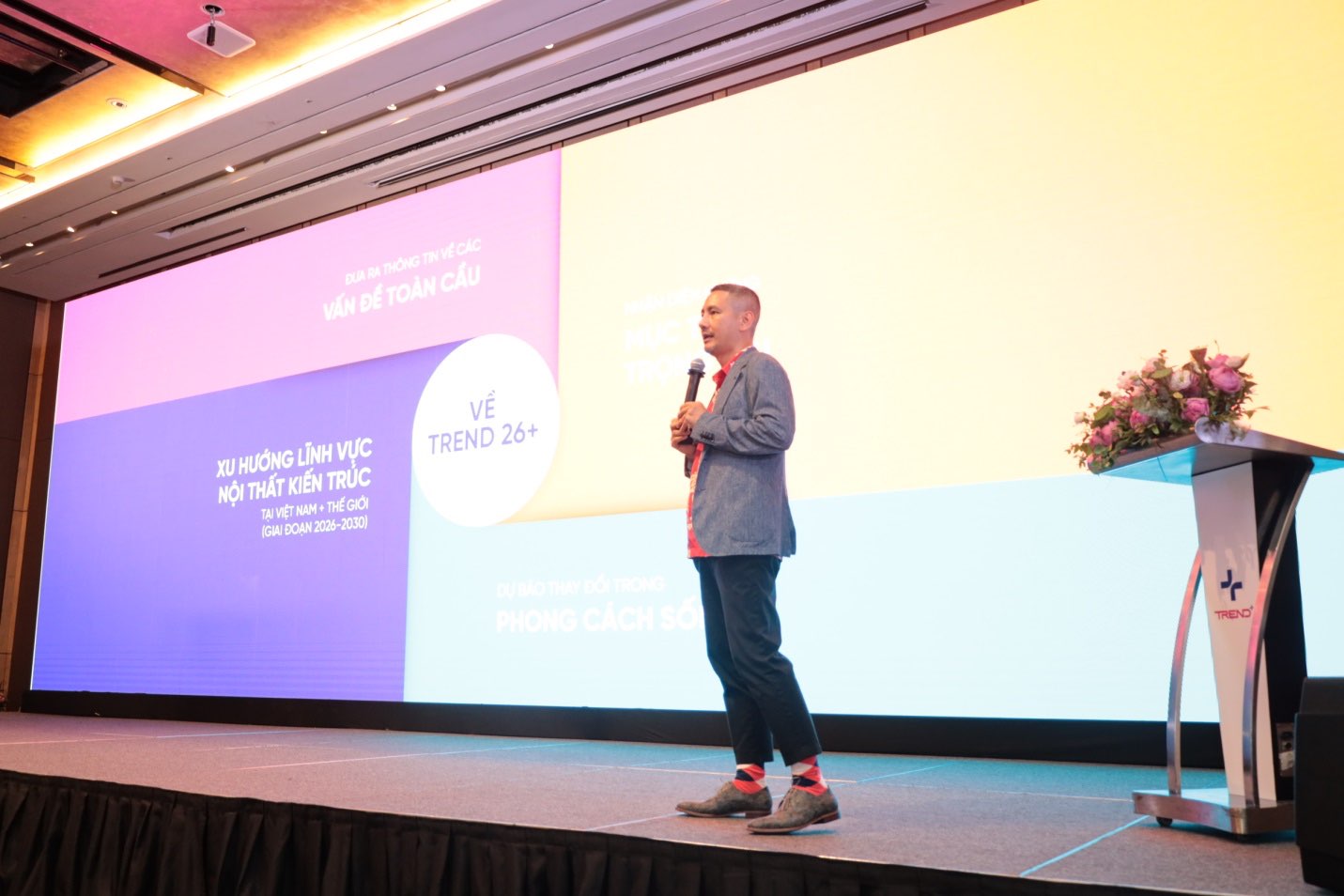
Gỗ Minh Long executives present the Trend 26+ publication.
Defining and Positioning Vietnamese Interior Design on the Global Map
Sharing his thoughts on Trend 26+, Dr. Arch. Phan Đăng Sơn, President of the Vietnam Association of Architects, stated that this publication has the potential to establish a meaningful platform that connects Vietnamese interior architecture with the global design community. It contributes significantly to theoretical discourse, critique, and trend shaping—igniting creativity while preserving Vietnamese identity in a global context.
He sees the publication as an effective communication channel, helping communities—especially end users—gain knowledge to appreciate, accept, and contribute ideas toward shaping architecture and interior design that is meaningful and relevant.
“Trend+ should become a bridge between interior architects, material suppliers, and project implementers, leading to architectural spaces that are functional, safe, aesthetically pleasing, material-conscious, and sustainably tranquil,” said Dr. Phan Đăng Sơn.
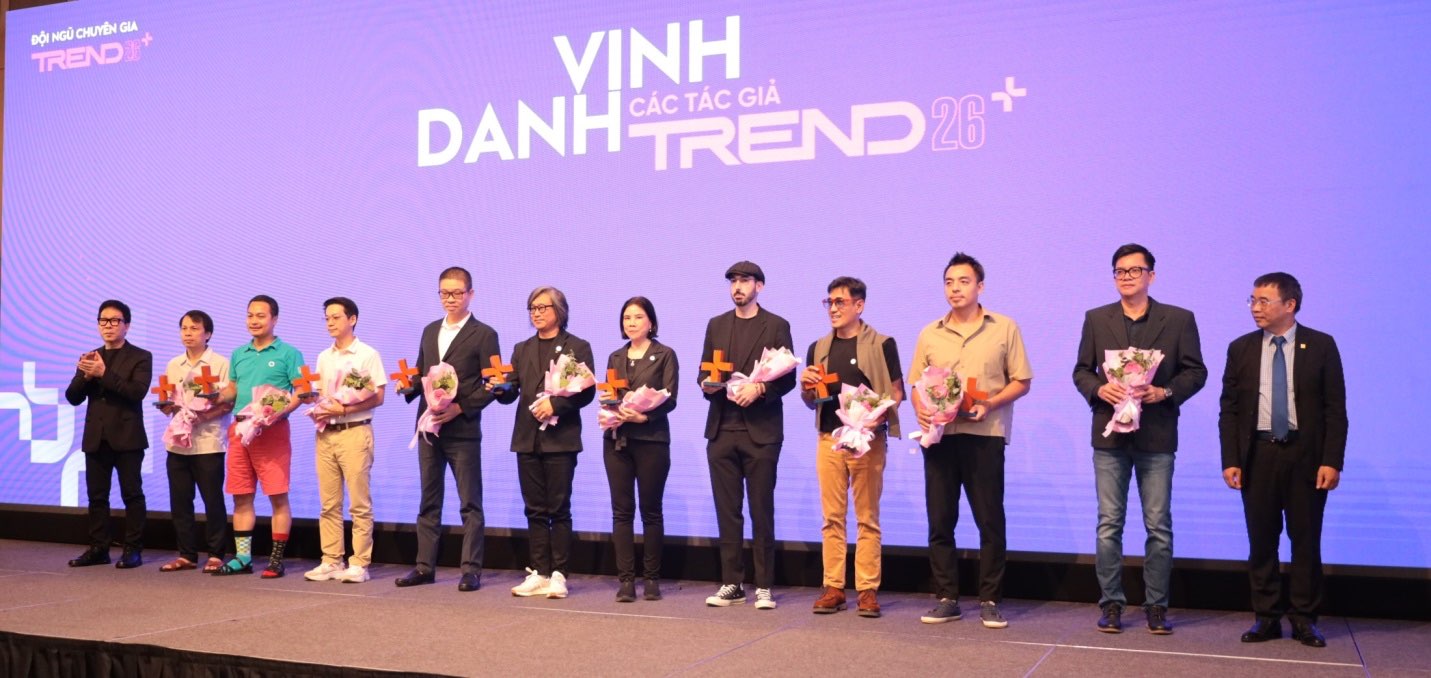
Leaders of the Vietnam Association of Architects and Vietnam Interior Design Association honor contributors to the Trend 26+ publication.
Architect Lê Trương, Chairman of the Vietnam Interior Design Association, added that the Association took part in Trend 26+ as co-publisher, organizer, and technical sponsor.
"Trend 26+ is a deeply researched trend document, built on international design currents and rooted in analysis of the Vietnamese interior market," said Lê Trương.
“This is a strategic tool aimed at enhancing creative capacity, forecasting skills, and critical thinking for the Vietnamese design community. It also represents a pivotal step in systematizing interior trends within the context of Vietnam’s culture, climate, and society—something we believe is urgently needed today.”
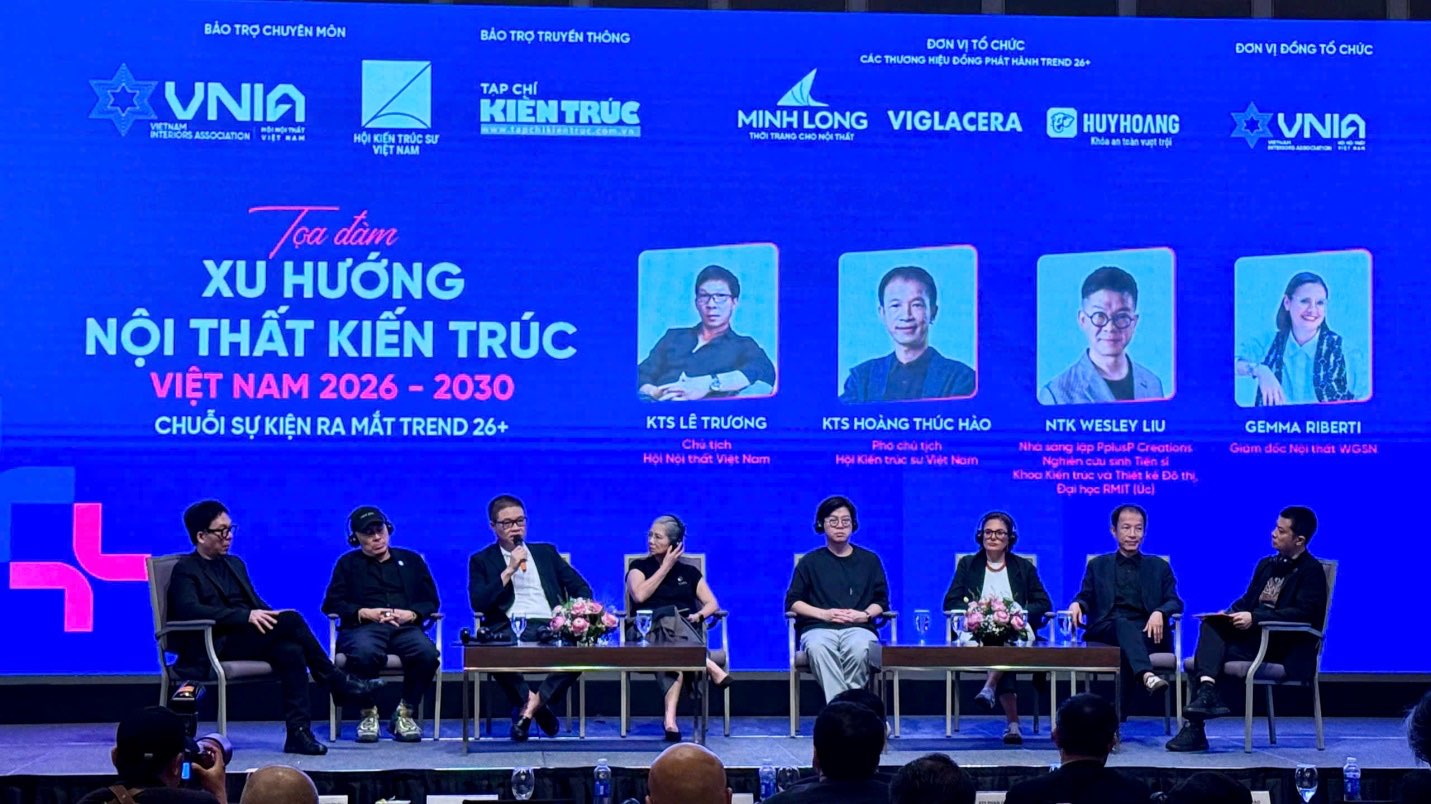
The launch event also featured a panel discussion on Vietnam’s interior design trends from 2026 to 2030.
Speaking on the current state and future potential of Vietnam’s interior industry, Lê Trương noted that Vietnamese interior design is entering a period of rapid development. This is fueled by a growing number of talented young designers, emerging local brands, and a market increasingly focused on aesthetics, experience, and cultural expression.
“Interior design is no longer just the ‘final touch’ to a space—it is now a language that reflects lifestyle, mindset, personal values, and even national identity.”
However, Vietnam still lacks a highly interconnected interior ecosystem, distinctive long-term design language, and structural support for branding Vietnamese interiors on the global stage.
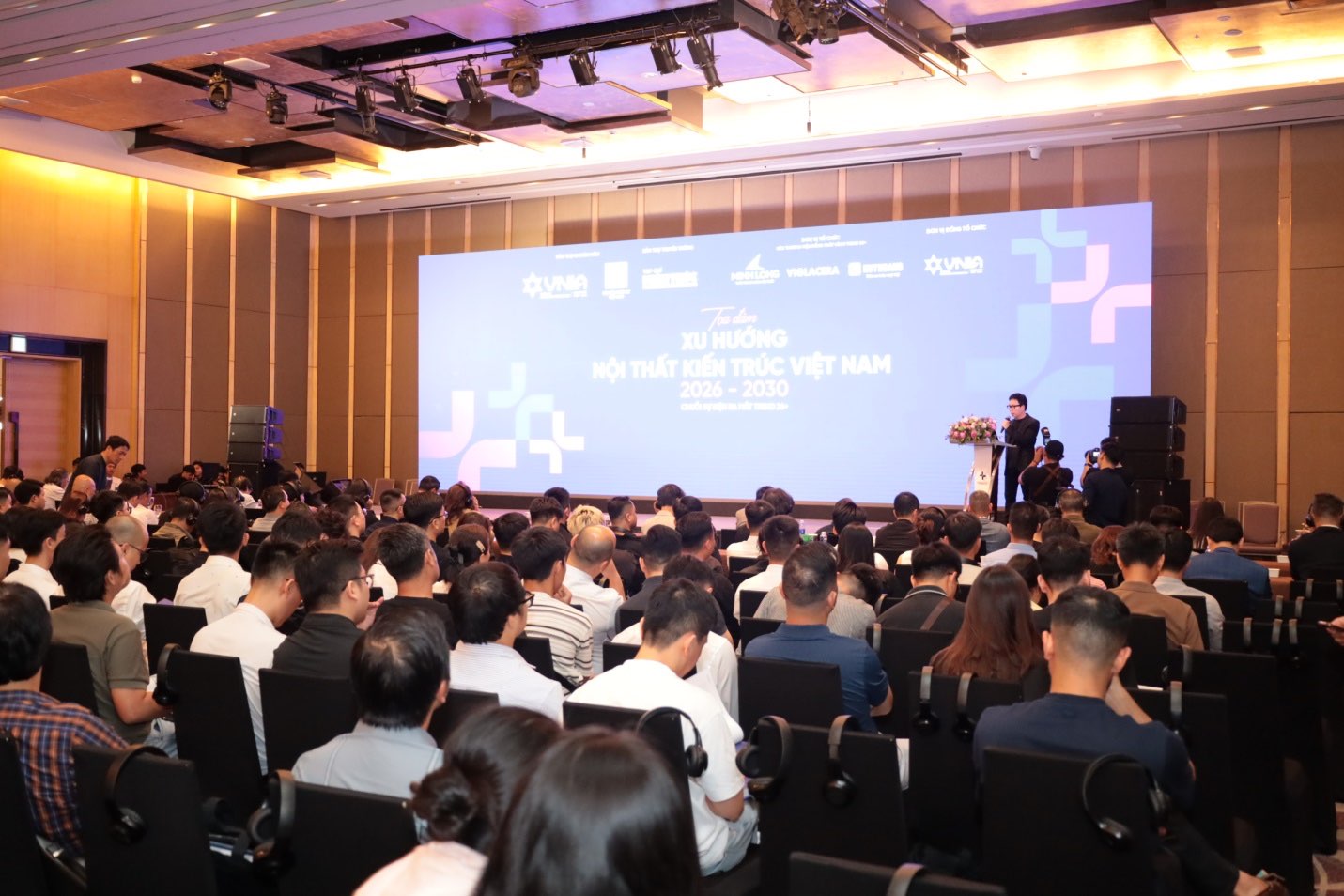
The launch of Trend 26+ drew significant attention from industry professionals.
“With Trend 26+, we aim not just for a short-term push, but to build a long-term framework of data, thought, and action that systematically defines the future of Vietnamese interior design,” Lê Trương shared.
The Vietnam Interior Design Association identifies its role as a professional organization that guides, connects, and inspires the design community—driving deep research, supporting sustainable initiatives, and nurturing future generations.
The Association strives to build a distinctive Vietnamese interior identity—not only to serve the domestic market but to define and position Vietnam within the global design landscape. This identity need not rely solely on tradition, but should represent a fusion of local values and contemporary thinking, culture and technology, the past and the future.
“We hope Vietnamese designers won’t just beautify spaces, but tell Vietnamese stories—through form, material, light, and detail. We don’t need to copy the world—we have the right and the foundation to create trends that carry Vietnam’s name,” emphasized architect Lê Trương.
Trend 26+ is the culmination of 24 months of research, curation, and design, with contributions from 45 leading experts, including 13 international experts from the Asia–Pacific region.
The 552-page publication was printed in 5,000 copies, presenting 31 major trends for the 2026–2030 period.
It outlines future-shaping directions across three key themes:
-
Sustainability & Greening: including healing architecture, green interiors, circular economy, and harmony with nature
-
Personalization & Humanity: focusing on user-centric design, personal experience, and work-life balance
-
Technology Integration: embracing AI, virtual technologies, and digital living environments
Source: Báo Xây Dựng (Vietnam Construction Newspaper)
